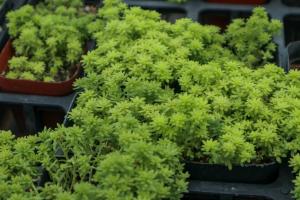1、 Curing method
1. Temperature: cinnabar root is native to the tropics, and the environment of 16-30 ℃ is suitable for its growth, so it doesn't have much problem when breeding at ordinary times. Mainly in winter, it must be kept above 10 ℃
2. Light: it should grow in an environment with good light conditions. If it is cultured indoors, try to put it in a place with good light and long-term sunshine. Moreover, we should ensure the circulation of air and avoid breeding diseases

3. Soil: cinnabar root is quite delicate. It has certain requirements for soil performance. The drainage performance must be good and there must be certain nutrients. Therefore, it is good to choose sandy soil when putting it into the basin
4. Fertilization: a certain amount of organic fertilizer should be applied to cinnabar root from the time of sowing. During the growth period, Huabao or ten times the mature liquid fertilizer should be applied every ten days or so

2、 Breeding skills
1. Pruning: the pruning of cinnabar roots is generally carried out in spring, mainly old, weak, sick and disabled branches. If found, it should be cut off in time to avoid affecting the normal growth of other branches and leaves
2. Basin changing: the basin changing and pruning of cinnabar root are inseparable. Generally, pruning should be carried out before basin changing. When changing basin, pay attention not to hurt its root system. The previous soil should be replaced, and it is better to cultivate with new soil

3、 Diagnosis and treatment problems
1. Stem rot: it often occurs in the environment of high temperature and humidity. It can be planted in a place with good ventilation and drainage, which can effectively prevent the occurrence of diseases. After the disease, it can be sprayed with 600 times of potassium permanganate solution, which can be used for prevention and treatment
2. Yellow leaves: the situation of yellow leaves is generally caused by low temperature and excessive watering. Timely reduce the frequency and amount of watering, and wait until the soil is completely dry. If it is caused by low temperature, it is necessary to raise the breeding temperature as soon as possible

4、 Other issues
1. Toxic: cinnabar root is not toxic, and its fruit can still be used for food. Not only the shape is strange and beautiful, but also the fruit is eaten, which is very popular with people
2. Whether it can be raised in the bedroom: cinnabar root is non-toxic and harmless to human body, but it is not recommended to breed in the bedroom, because photosynthesis will consume indoor oxygen at night. If the bedroom space is large and the ventilation performance is good, it can also be cultivated


 jackfruit
jackfruit snake plant
snake plant hibiscus
hibiscus hydrangea
hydrangea lavender
lavender Green roses climb al...
Green roses climb al... If you don't pay att...
If you don't pay att... Management of four g...
Management of four g...


































